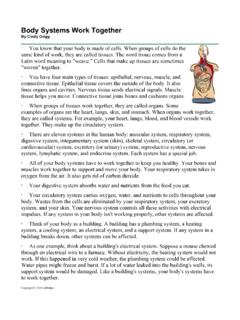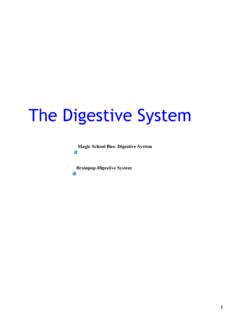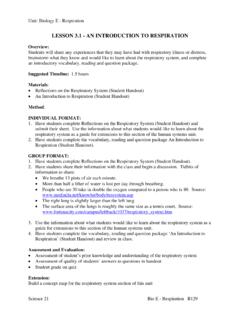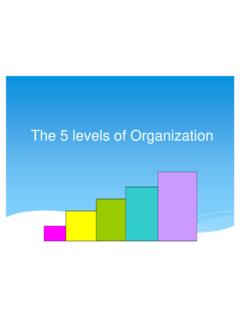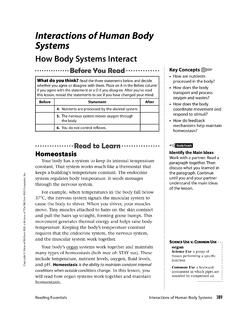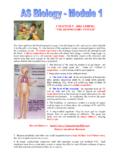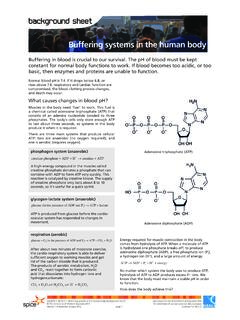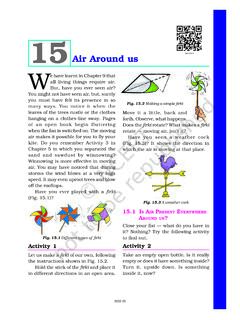Transcription of How to Analyze Stress from Heart Rate Variability - Firstbeat
1 How to Analyze Stress from Heart Rate & Heart Rate Variability : A Review of PhysiologySTRESS AFFECTS THE AUTONOMIC NERVOUS SYSTEMTERMINOLOGY Heart rate (HR): heartbeat frequency as beats per minute (bpm) Heartbeat (R R interval): time between consecutive heartbeats (R waves) in milliseconds (ms) Heart rate Variability (HRV): beat to beat variation in the time between consecutive R R intervalsHEART RATE Variability : A WINDOW TO THE BODY Lifestyle assessment is based on analysis or Heart rate Variability (HRV) HRV means the variation in time between consecutive heartbeats Heart rate Variability is regulated by the autonomic nervous system and affected by age, physical condition and Stress . Firstbeat utilizes HRV to make a model of the body s physiological states. HRV is used to estimate: respiration frequency oxygen uptake energy expenditure training effect (EPOC) recovery and stressStress reactionsRegulation of respirationSympathetic reactionsRecoveryVagal nervous activityOxygen uptakeAutonomic nervous systemHEART RATE & Heart RATE Variability (HRV)5sec908msHR 66885msHR 681063msHR 56917msHR 651176msHR 51 Heart rate 61 beats/minRR I 1000 ms HR 60 beats/minRR I 500 ms HR 120 beats/minRR I 400 ms HR 150 beats/minINFLUENCE OF RESPIRATION ON Heart RATEThe figure shows how the cyclic variation of respiration (RSA, respiratory sinus arrhytmia) affects Heart rate Variability .
2 Exhalation: HR dropsRRI lengthens HRV growsInhalations: HR increases RRI shortens HRV gets smallerWHEN HR DROPS, HRV GETS BIGGER In a healthy, fit adult, HRV usually grows during rest. Sleeptime recovery (its quality) is weakened by various stressors, such as Stress , sleep problems, illnesses, medications, alcohol, weak physical condition and rate drops during sleepHRV grows during sleepHeart rate Variability (RMSSD) Heart rate bpmFACTORS AFFECTING Heart RATE VARIABILITYHEART RATE ALONE DOES NOT REVEAL OVERLOADB efore the overload: Avg. HR 48 Avg. HRV 82 ms HRV is big indicates good recovery and health2 months later: Avg. HR 47 bpm Avg. HRV 12 ms HRV dramatically reduced: obvious signs of overload / no signs of recoveryEFFECT OF AGE ON Heart RATE VARIABILITYPoorRMSSD is in the lowest 10% of your age group averageModerateRMSSD is between 10 and 50% of your age group averageGoodRMSSD is in the highest 50% of your age group average 10%20%30%40%90%70%50%60%80% AUTONOMIC NERVOUS SYSTEMS ympatheticnervous system Speeds up bodily functions Heart rate Heart rate Variability Stress reactionsParasympatheticnervoussystem Calms down bodily functions Heart rate Heart rate Variability Recovery The result reflects changes that take place in the autonomic nervous system .
3 When the activation level is elevated, the activity of the sympathetic nervous system increases a Stress reaction. Time periods when the parasympathetic nervous system is dominant are identified as recovery. There is no right or wrong way to react to a situation! It s more essential to determine if the reaction is meaningful ( whether recovery state is seen during a relaxation activity or sleep). Stress AND RECOVERY IN Firstbeat REPORTSLIFESTYLE ASSESSMENT GRAPH AND Heart RATE Variability (RMSSD) Case Shift workDIGITAL MODEL OF BODY S REACTIONSHRV indexes, respiration frequency, VO2 Does the segment contain physical activity?(% ) Does the segment contain signs of recovery?(%HRmax, ) Does the segment contain signs of Stress ?(%HRmax, HRV, ) YESYESP hysical activityRecoveryStressYESEIEIO ther stateNODEFINITION OF PHYSIOLOGICAL STATESO therstate Increasedactivation level in the body caused by Stress reactions. The reaction can be positive or rate, increased respiration frequency, low Heart rate Variability , oxygen uptake <20% of maximal capacity (VO2max).
4 Lowered activation level & calmingdown of the body. Nighttimesleep and relaxing breaks are important recovery periods. Parasympathetic rate, low respiration frequency, high Heart rate Variability , oxygen uptake <20% / activity during which the intensity is >30% of maximal levelphysical Stress /activity during which the intensity is 20 30% of maximal (white) is typically recovery from exercise, short awakenings during sleep or missing data periods (for example during a shower).Physical activityRecoveryStress reactionsDaily physical activityCAUSESOF Stress / STRESSREACTIONSP hysicalstressors(internal) Fatigue Overload/ overtraining Burnout Pain Acuteinfections Chronicillnessess Dehydration Digestion PregnancyPhysical stressors(external) Heavy exercisetraining Lackof sleep Physical workload coffee Medications Alcoholorothersubstances, hangover Sauna Temperature, noise, altitude JetlagPsychologicalstressors Anxiety, depression, sorrow Negative emotions Traumaticevents Workstress Psychologicalconditions Fear, tension Relationshipproblems fallingin loveSocial stressors Pressures Lackof social support Presentation / speech Fearof social situationsFIRSTBEATANALYSIS DOES NOT DIFFERENTIATE BETWEEN POSITIVE AND NEGATIVE Stress
